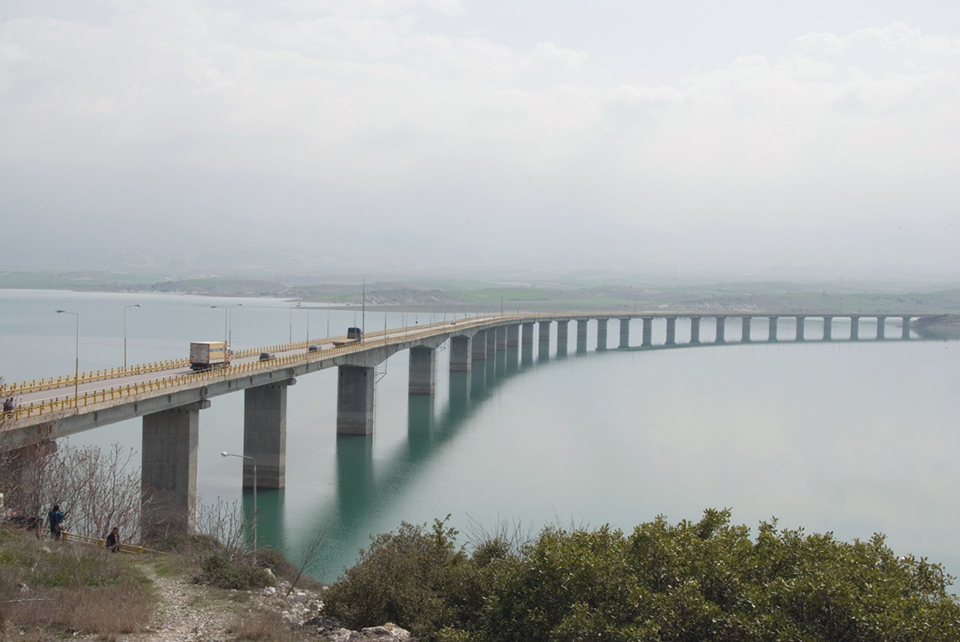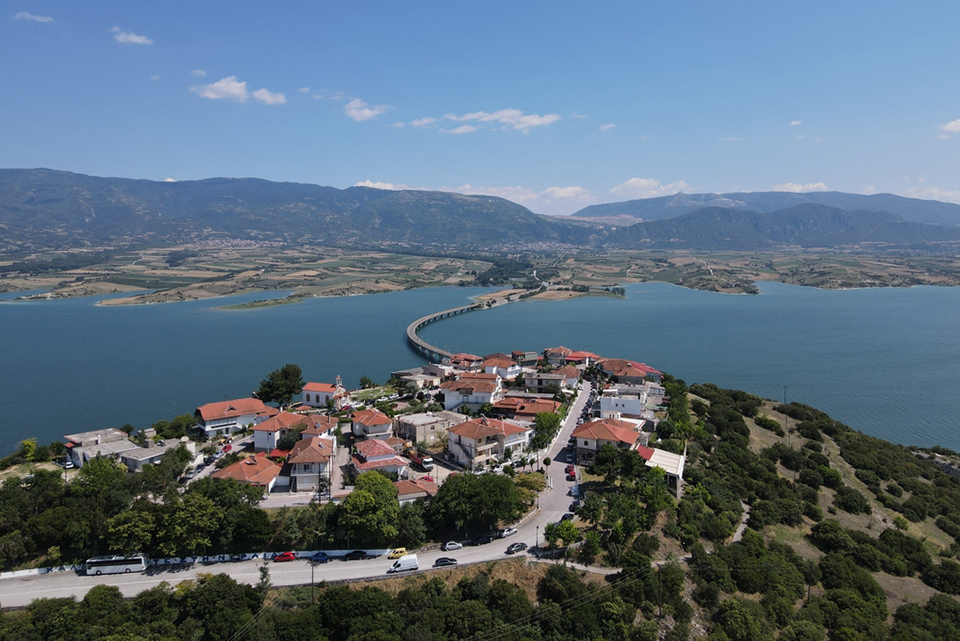
“Think that in order for the municipality’s garbage truck to go to the opposite side, for the route that it has done in five minutes across the bridge, it will now need to travel 100 km,” notes the mayor of Serbia “K”. Christos Eleftherioucommenting on the decision to ban the passage of vehicles over 3.5 tons on the area’s iconic bridge.
The solution came when the technicians who carried out the restoration work on Serbia High Bridge they found very serious problem in two of the four tendons, in one traffic flow.
With a length up to 1372 meters bridge one of the largest in the country. It was launched in November 1976 and is part of the national road Kozani – Larisa, 15 km southeast of it. Kozani and 7 km northwest of Serbia.
The mayor notes that there will be many problems in everyday life: from school buses that have to change to smaller cars in order to be able to cross the bridge, to a complete ban on the movement of at least 100 cars that arrive daily at the mine that operates in the area. In addition, it is forbidden to enter the bridge for KTEL buses following in the direction of Larisa – Kozani, as well as vehicles of transport companies.
The bridge essentially supports all traffic from Kozani to Athens, and alternative routes are very time consuming or difficult. According to Mr. Eleftheriou, this will swipe for Serbia and the rest of the villages in the area, which are already experiencing the effects of delignitization. According to him, the ban on the passage of heavy vehicles on the bridge will further isolate Serbia.
According to the mayorproblems on the bridge have been visible to the naked eye for 20 years“, and the obstacles of decades have brought it to the state it is in today. As indicative, he cites the fact that the last inspection of the bridge took place in 1995 after the earthquake that occurred in the area.

Problems since 2020
The ban struck lightning not at the local community, but at those who use the bridge. March 2020 Regional Governor of Western Macedonia, George Casapidis, the decision was made at the suggestion of Kozanitis, originally a professor in the Department of Civil Engineering at the University of Birmingham, Stergiou Mitoulis, reduce the speed limit for passing vehicles from 60 to 40 km/h and set the maximum allowed mass for passing vehicles at 50 tons. At the same time, traffic lights were also installed, and a driving distance of at least 100 meters from one vehicle to another was determined, but this, according to the mayor of Serbia, was never implemented.
Mr. Kasapidis told K that when he took office in 2019, he began fixing problems with the bridge, which he said had been left to its own devices. “The deformation of the deck was visible to the naked eye, as were the curves of its railing.” notes the governor of the region, who requested a comprehensive study of the stability of the bridge with the financial support of the Ministry of Transport and Infrastructure, which will be put up for auction soon.
He describes how, when the plans for the bridge were sought to start restoration studies, they were not saved by the Greek state. The construction of the bridge was carried out by the Greek Construction Bureau in the office of an Italian professor of architecture, Ricardo Morandi. So, not finding the drawings of the bridge in Greece, the locals looked for them in Italy. After licensing by the Italian state were finally given away in the summer of 2022 in Greece.
In September 2022, the county’s engineering teams conducted a survey and demolition of the bridge to determine how to strengthen the structure. An autopsy showed a serious problem between the fifth and sixth pillars of the bridge.that is, in two of the four tendons, in one traffic stream.
In the meantime, restoration work began, after research by the Aristotle University of Thessaloniki and Egnatia Odos, a solution was proposed to strengthen problem areas with a special external cable.
Strong cracks
Last Friday, it was announced that during the restoration work, serious cracks were discovered on part of the bridge. “The cracks were “hidden” in the cement and were not visible.” notes the governor of the region, who, after a meeting of researchers with technical services, was forced to request new, more stringent measures for crossing the bridge, which have been in force since last Saturday evening.
According to the governor of the region, work is underway to install a bracket on the problematic part of the bridge, which is considered the fastest and most economical solution, since its cost will not exceed 150,000 euros, until a basic study of the stability of the bridge is carried out. the bridge is being implemented.
When asked how long the ban on the movement of vehicles weighing more than 3.5 tons would last, the governor of the region replied that in two months the installation of the bracket would be completed,”if the work does not reveal other problems. In that case, the ban could be extended, but we don’t know yet.”

“A comprehensive restoration study is needed”
Professor of Civil Engineering, University of Birmingham, Stergios MithoulisA Cozanite by origin, he is of the opinion that the lack of in-depth study of the problems of the bridge can lead to a loss of time, decisive for the already bad state in which the bridge fell.
In December 2021, Mr. Mitulis presented the study he had done for the bridge in the context of the EU finance programme. Horizon. The research project of Mr. Mitulis’s group consisted of two parts: one looked under the microscope at the longevity of the bridge, and the other looked at the impact on society of its gradual decline in function.
He notes to K that, according to the January 2020 investigation, more immediate and comprehensive interventions were needed since then than those currently underway.
“We learned how as of 2020, the bridge is 30–35 centimeters below its original position.. This movement is very long. The model we ran shows us how loss of tendon strength lost up to 50% with a problem localized not only in two tendons, but also in six“.
“Briefly, the bridge is in a state of extreme strength, brought to the limit and dangerous. At the same time, however, it is being repaired not on the basis of a detailed study, but with the logic of the patch. As we have already seen, the lack of a comprehensive study has already once led to surprises, ”the professor emphasizes, referring to the cracks discovered a few days ago.
For Mr. Mitulis, this “pearl” bridge, as he calls it, which was once the largest in all of the Balkans, has now gone beyond its limits, like many of the bridges built by Moradi in the 1970s.
“When Moradi studied this particular bridge, he believed that the concrete around the veins would ideally protect them from corrosion and water. However, in the 1970s, tendon protection was not known. Today we line them with very high density plastic pipes. In any case, a complete restoration will require at least 4-5 million euros. It’s almost more profitable to build a new bridge, unless a generous sum is set aside to rebuild it from scratch.”
Source: Kathimerini
Ashley Bailey is a talented author and journalist known for her writing on trending topics. Currently working at 247 news reel, she brings readers fresh perspectives on current issues. With her well-researched and thought-provoking articles, she captures the zeitgeist and stays ahead of the latest trends. Ashley’s writing is a must-read for anyone interested in staying up-to-date with the latest developments.